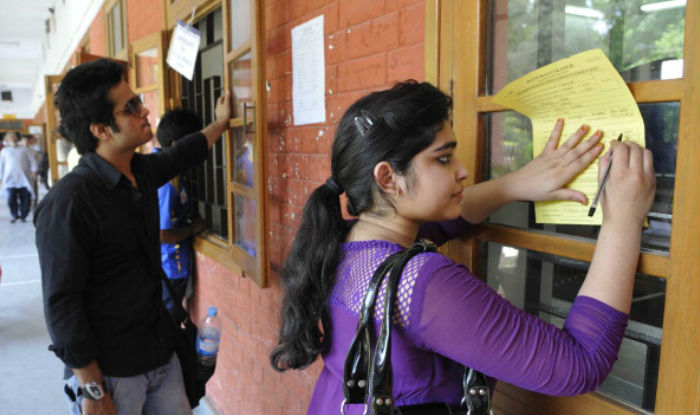- Select a language for the TTS:
- UK English Female
- UK English Male
- US English Female
- US English Male
- Australian Female
- Australian Male
- Language selected: (auto detect) - EN
Play all audios:
Belinda Dewar, MSc, BSc, RCNT, RN. Development and Research Manager For the past 15 years a central theme of government health-care policy has been to encourage the health service to change
the way it relates to those who use it. Recent health policy documents such as Our National Health: A plan for action, a plan for change (Scottish Executive, 2000) emphasise a more
integrated way of working that reflects co-operative partnerships. Since the early 1980s, researchers, carers’ organisations and other interested groups have argued for the need to value
carers and provide them with adequate support. By investigating the concept of carer involvement in one hospital setting, a study by Walker et al (1999; Walker and Dewar, 2001) explored some
of the main issues highlighted repeatedly in the literature. In particular, the lack of information given to carers and their exclusion from the decision-making process was highlighted.
Involvement in decision-making is a complex process. The Walker study unravelled some of these complexities in hospital settings and produced a set of guidelines to enhance lay-carer
involvement in decision-making for people with dementia. The guidelines were further validated in a project with groups of carers in a variety of settings (Goulbourne et al, 2001), which is
discussed in this paper. Box 1 sets out the project objectives. METHOD The project team focused on validating the accuracy, relevance and feasibility of guidelines for the carers of family
members with dementia in collaboration with a group of lay carers. Thirty-four carers were invited to participate and 19 did so. They were a small, unique group of individuals and their
concerns may differ from those of other carers. Their overriding concerns, however - the importance of knowing the person with dementia, carer expertise going unrecognised, and carers’
difficulty in having a voice in the health- and social-care arena, are common concerns of carers that have been echoed in other work. Of the 19 carers, 15 shared their experiences with
project workers in two separate workshops, and a further four provided written feedback. The discussion and debate engendered by four concurrent focus groups in these two workshops enabled
appropriate amendments to be made to the guidelines by the project team. Authentication of these guidelines was achieved through further analysis by the carers, which directly affected the
level of transferability to a variety of settings, such as respite and day-care services, home and hospital. BELIEFS AND VALUES UNDERPINNING THE GUIDELINES The guidelines reflect a process
of negotiated care (Walker et al, 1999). The key points of the guidelines are listed in Box 2. This process of negotiated care needs to be central to interactions between carer and health-
and social-care professionals, irrespective of care context. The carers identified factors that would promote more integrated and consistent ways of working with a health service that valued
the contribution they could make towards the well-being of people with dementia:- - Open communication between different professionals and carers - Carers knowing who is available to
contact at certain times - Carers having adequate information about and easy access to available resources - Carers receiving acknowledgement for the work they do, the knowledge they possess
and the expertise they demonstrate. The guidelines developed from the project are presented below. Each guideline marks a stage in the carer’s journey from ‘initially making contact’ to
‘making sure it is all working’. They are presented here with a discussion about the key themes carers raised in relation to each guideline. GUIDELINE 1. MAKING CONTACT Carers can expect
their GP, or other health- or social-care professional they are seeing for the first time about the condition of their relative, to: - Understand the physical, social and practical problems
carers face and the impact these have on their lives - Help the carer to identify a person who can act as a key person to co-ordinate, inform, listen, involve and support them with their
immediate and long-term needs and decisions. Initiating contact: the importance of the GP’s role - The notion of a key person with whom carers can negotiate care arose out of previous work
(Herzberg and Ekmanm, 2000; Walker et al, 1999; Sheard, 1998). Although carers may need several ‘key people’ to assist with the multitude of needs associated with caring for someone with
dementia, initiating contact with key professionals is normally effected through the GP. The importance of the GP and the primacy of his or her role in facilitating stability for the carers
or averting a crisis in their lives cannot be overestimated. Carers attending GP surgeries at this stage of their caring journey usually did so on behalf of the person with dementia rather
than for themselves. The most common reason for seeking an appointment was a ‘crisis’ - defined as a physical or mental deterioration in the person with dementia, which in turn had had a
severe impact on the carer’s ability to manage the home situation. Carers faced a multitude of problems - some were medical, others everyday problems that affected the carer’s ability to
cope. Carers would not emphasise their own health needs when visiting the GP, despite their social and psychological burdens. They found it difficult to express their own feelings to
professionals in order to reveal the emotional labour associated with their role. Obtaining a medical label of ‘dementia’ early on in the diagnostic stages was often the carers’ prime
motivation in visiting the GP, as this label legitimised access to a number of support services. However, GPs do not always give a diagnosis in these early stages. One carer commented: ‘It
was so difficult to get people to realise my mother has dementia and that she isn’t just getting old and forgetful - I stressed for months about this before something was done.’ Receiving
appropriate support should not depend on a provisional medical diagnosis, but on a service that readily perceives how a crisis or physical deterioration impacts on the carer’s own life.
Carers felt that the overriding medical model of care, which classifies individuals according to pathology, can limit carers’ access to professional care. Caring for someone was described by
carers in this project as more than attending to medical or physical needs. It required a thorough knowledge of the individual and an ability to identify subtle changes in mental and
personal well-being. An understanding by health professionals of the nature of the relationship that the carer has with the person with dementia was also seen as crucial to the type of
involvement needed. Carers indicated that a variety of health professionals often needed to be involved in an individual’s care. Many carers felt that although the first contact was the GP,
this individual would not necessarily act as a key contact. The nature of the multiple health needs determined what is needed from the ‘key person’. Carers perceived best support as coming
from a person or people who could anticipate and meet long- and short-term caring needs for the carer and his or her dependant. Models of working with key people are shown in Box 3. Whether
one individual or a team of people, the key person(s) would act as the carer’s main support. All carers welcomed this concept. Quality of communication with the key person was seen by carers
as vital, and Guideline 1 addresses ways of ensuring professional assistance is accessed, especially when changes in an individual’s condition precipitate a crisis in care giving. GUIDELINE
2. MAINTAINING CONTACT In order to maintain contact the key person should be: - Accessible: the carer should be able to contact the key person at mutually agreed times - Committed to
maintaining ongoing contact. Agreement as to the flexibility of this contact should be mutually agreed - Available: alternative arrangements should be put in place if the key contact is not
available. Role clarification of key person - The role of key person is more than that of a co-ordinator of services for the carer. One carer emphasised the need for co-ordination in the
following statement: ‘You often find that all the people you contact say, ‘I’ve got my job, he’s got his job’, but nobody knows what each other’s jobs are - there needs to be a
co-ordinator.’ The key contact should establish a relationship with the carer that reflects continued commitment to him or her over a period of time. The relationship between the carer and
key contact should reflect detailed understanding and knowledge of the carer’s situation and the person for whom he or she is caring. This implies that contact with the key professional
should be continuous and sustainable. This will enable assessment to be regular, individualised and holistic. As short- and long-term needs are dictated by the progression of the dementia,
continuity of assessment is vital. Continuity of regular assessment and support - Carers in this study were keen to be kept informed of any changes. They were concerned that, once initial
assessments were carried out, there seemed to be no plan for a review. Hansebo et al (1998) suggest that relatives could be an active part of the assessment process, and so be involved in
care in a natural way. As part of this role, maintaining contact and communication to support the carer through times when resources are reduced to emergency cover is vital rather than
idealistic. Alternative contacts could be available during out-of-hours situations or when the key person is not accessible, for example during periods of absence through sickness or
holidays. Having alternative contacts who had no knowledge of the situation was, however, seen as problematic, as one carer in our study noted: ‘Do they know the case? Do I have to start
from scratch? In this set-up both sides get fraught.’ Continuity of carer support could be assisted by a carer’s diary, which, if containing the salient problems specific to the individual
with dementia, could facilitate better understanding for other workers unfamiliar with the carer’s situation and the person for whom they are caring. GUIDELINE 3. INVOLVEMENT IN CARE Carers
may work with several groups of professionals who may be involved with planning care (not just the key person). Their knowledge and expertise concerning the individual needing care will be
valued by these different groups of health- and social-care professionals, as this knowledge will ensure the relative remains central to any decisions made about their care. This will ensure
that care given to the relative, irrespective of care setting, is appropriate, manageable and supported. Carers can therefore expect health- and social-care professionals to: - Ask you how
they would like to be involved in decisions made about their relative’s care - Involve them in any decisions made about the care of the relative - Understand if the carer wants someone to
support them in this process, for example a key contact person, a family member, someone from a carer support group, or a member from an advocacy organisation. For example, if the carer is
involved in decisions made about care in more formal settings, such as family meetings, case conferences and review meetings, they can expect: - To be told what will be discussed at the
meetings - Their own issues about their relative’s care and personal support to be included on the agenda for these meetings - A health- or social-care professional to support the carer
during the meeting, by ensuring issues are fully discussed, and after the meeting, by checking carers are satisfied with the overall process of the meeting and the way decisions were made.
Supporting carers’ choice to participate in decision making - The level of involvement of carers with different workers at different times will change according to care demands and
priorities, as dictated by the progression of dementia. The degree to which carers choose to participate in decision-making processes about the planned care of their relatives may change
according to their levels of physical and emotional energy. The carer’s key people or professional contacts should therefore respect the carer’s autonomy by supporting their choice to either
become involved or continue to be involved in care-planning processes. Supporting the carer’s choice to be involved may be especially important when formal meetings occur, such as family
meetings, case conferences, or reviews. ‘Often I want to put things forward but I forget.’ ‘It would be good to meet after a meeting to say here are the things I want to say but I could not
say.’ Furthermore, carers may be concerned that their questions or worries may make no difference to the quality of care given or may have detrimental consequences for the care the relative
receives (Herzberg and Ekman, 2000). Putting forward carer issues may involve carers directly or may include involvement of others who can adequately represent the carer and act as an
advocates. Such an advocate might be a health-care professional, a member of an advocacy agency or a friend. The key person’s role is to facilitate this advocacy if required. Coaching carers
and professionals in exchanging expertise - Professionals may need ‘coaching’ in how to involve and value carers. Likewise, carers may need coaching in how to articulate their vital
knowledge about the patient, so that professionals are able to initiate processes of care that are individually oriented. For example, recording these things in a diary or a notebook or
writing histories may help professionals understand details about an individual that make a significant difference to the ways in which care is planned, organised and delivered. GUIDELINE 4.
MAKING SURE IT’S ALL WORKING As part of the process of being involved in reviewing care issues and decisions, carers can expect: - Health- and social-care professionals to listen to the
carer’s feelings about the care being given - Support for the carer and the person being cared for - To negotiate the best methods to feed back information, which should ideally begin at the
outset and may involve keeping a diary or planning regular times for face-to-face or telephone meetings with care professionals - Health- and social-care professionals to offer the carer
the opportunity to look at any care plans so that their continued relevance may be considered. A model of evaluation of carer involvement - This guideline will give carers an opportunity to
review how progress of care and the level to which they are involved contributes to the quality of care delivered. The guideline emphasises that a spiral model of evaluation (whereby
feedback of involvement leads to action that is further evaluated and subsequently acted upon and evaluated), enables review processes to be continuous and dynamic. Methods of establishing
evaluation processes should be negotiated at an early stage and framed around questions such as: - How frequently should carers and professionals agree to meet to review processes of care
and involvement? - Who should be included in this review process? - What is the best method to feed back immediate and long-term concerns? Ongoing review of care, between carers and
professionals, informs new ways of working and is crucial to ensuring the best possible care for the individual with dementia is achieved. CONCLUSION Involvement in planning person-centred
care for people with dementia is not formally recognised by professionals. As a result, it is often ad hoc and dependent on factors such as the personality of the carer. Opportunities for
involvement need to move beyond situations which are open only to those who can clearly communicate the wish to be involved in decisions about care. The guidelines presented in this paper
were fully supported by the carers who took part in this project and offer a framework in which meaningful involvement could take place. Carers in this project were, however, uncertain about
whether the ‘ideals’ represented in the guidelines could be implemented in practice. They acknowledged that the guidelines in themselves will not necessarily result in a change of practice.
Involving lay carers in the decision-making processes inherent in providing professional care is part of a changing cultural context that embraces personhood. A follow up study that seeks
to facilitate the implementation of these guidelines in practice is currently underway. This study aims to enable staff to overcome some of the barriers that restrict meaningful negotiations
between staff and carers. Listening to carers’ narratives revealed the need for new ways of thinking about the professional relationship between nurses and lay carers, which would emphasise
carer expertise in partnership with professional expertise. Specific contextual information provided by the carers was also very valuable in developing and modifying these guidelines in
order to effect improved communication with professionals. Increasing the involvement of lay carers in decision making demands that health professionals must first value the contribution lay
carers can make towards delivering best care to the person with dementia. If professionals and carers were mutually receptive and open to what each has to offer the other, tacit expertise
would be revealed that could enhance the effectiveness of care delivery, not to mention mutually beneficial relationships between carers and professionals. ACKNOWLEDGEMENT We are indebted to
the carers for their valuable contribution to this study. Funding for this study from the Foundation of Nursing Studies is gratefully acknowledged. The views expressed here by the authors
are their own and are not necessarily those of the funding body. GOULBOURNE, A., DEWAR, B., IRVINE, L., RIDDELL, H. (2001)_A Project to Validate Guidelines which seek to involve lay carers
of people with dementia in care planning processes: Final report. Edinburgh: Queen Margaret University College._ HANSEBO, G., KIHLGREN, M., LJUNGGREN, G., WINBLAD, B. (1998)_Staff views on
the Resident Assessment Instrument (RAI/MDS) in nursing homes, and the use of the Cognitive Performance Scale (CPS) in different levels of care in Stockholm, Sweden. Journal of Advanced
Nursing 28: 3, 642-653._ HERTZBERG, A., EKMAN, S. (2000)_‘We, not them and us?’ Views on the relationships and interactions between staff and relatives of older people permanently living in
nursing homes. Journal of Advanced Nursing 31: 3, 614-622._ SCOTTISH EXECUTIVE. (2000)_Our National Health: A plan for action, a plan for change. Edinburgh: Scottish Executive._ SHEARD, D.
(1998)_Community mental health teams (older people): the Coventry model. In: Sheard, D., Cox, S. (eds). Teams, Multidisciplinary and Interprofessional Working and Dementia. Stirling:
Dementia Services Development Centre, University of Stirling._ WALKER, E., DEWAR, B., RIDDELL, H. (1999)_Guidelines to Facilitate the Involvement of Lay Carers in the Care Planning of the
Person With Dementia. Edinburgh: Queen Margaret University College._ WALKER, E., DEWAR, B. (2001)_How do we facilitate carers’ involvement in decision making? Journal of Advanced Nursing 34:
3, 329-337._








